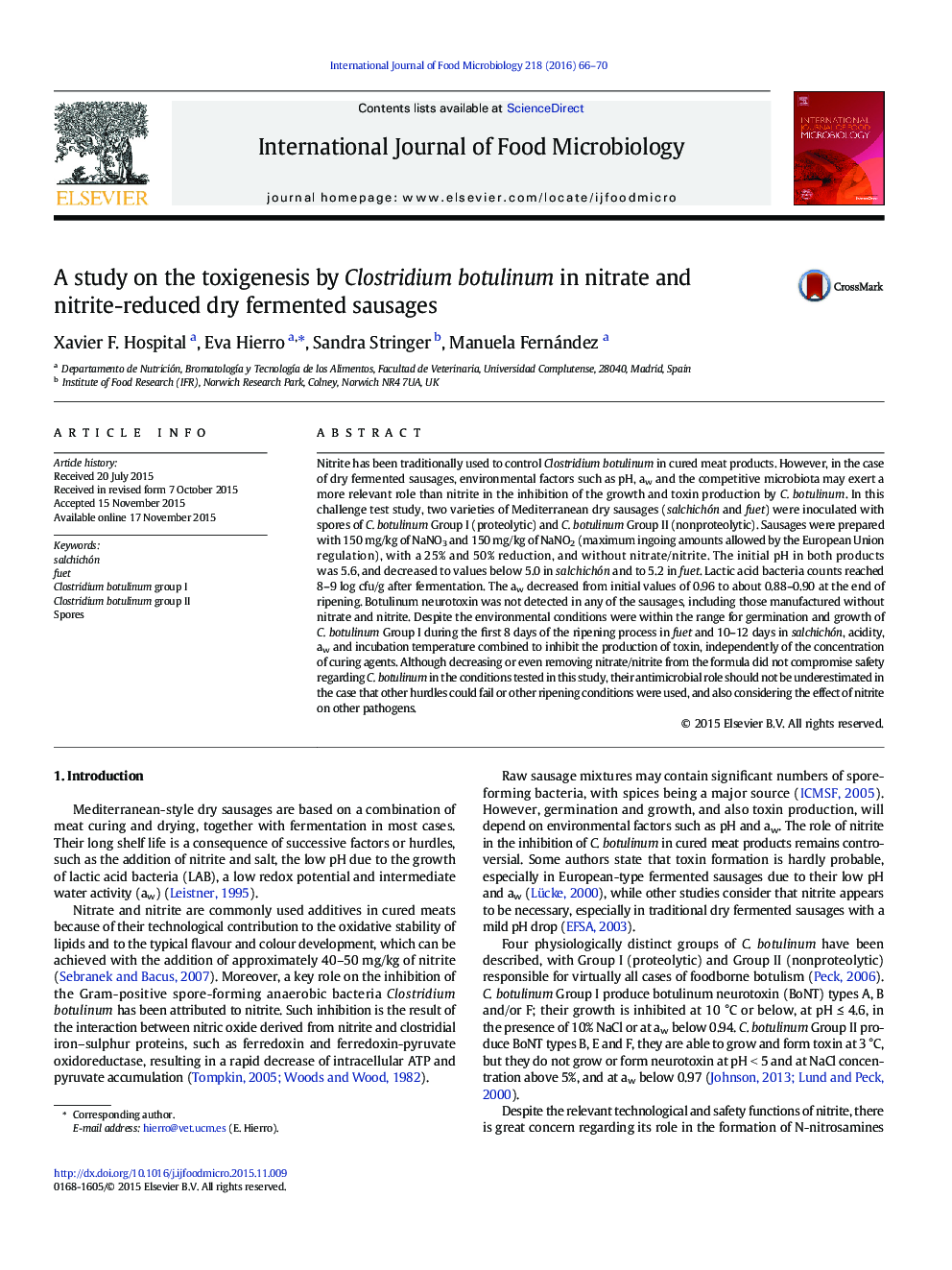| کد مقاله | کد نشریه | سال انتشار | مقاله انگلیسی | نسخه تمام متن |
|---|---|---|---|---|
| 4366378 | 1616565 | 2016 | 5 صفحه PDF | دانلود رایگان |
• The role of nitrate/nitrite in botulinum toxin formation in dry sausages was tested
• A challenge test study was conducted in two Mediterranean-type sausages
• No botulinum toxin was detected in any of the formulations prepared
• pH and aw contributed to inhibit botulinum toxin production
• Controlling technological factors is essential to inhibit C. botulinum in sausages
Nitrite has been traditionally used to control Clostridium botulinum in cured meat products. However, in the case of dry fermented sausages, environmental factors such as pH, aw and the competitive microbiota may exert a more relevant role than nitrite in the inhibition of the growth and toxin production by C. botulinum. In this challenge test study, two varieties of Mediterranean dry sausages (salchichón and fuet) were inoculated with spores of C. botulinum Group I (proteolytic) and C. botulinum Group II (nonproteolytic). Sausages were prepared with 150 mg/kg of NaNO3 and 150 mg/kg of NaNO2 (maximum ingoing amounts allowed by the European Union regulation), with a 25% and 50% reduction, and without nitrate/nitrite. The initial pH in both products was 5.6, and decreased to values below 5.0 in salchichón and to 5.2 in fuet. Lactic acid bacteria counts reached 8–9 log cfu/g after fermentation. The aw decreased from initial values of 0.96 to about 0.88–0.90 at the end of ripening. Botulinum neurotoxin was not detected in any of the sausages, including those manufactured without nitrate and nitrite. Despite the environmental conditions were within the range for germination and growth of C. botulinum Group I during the first 8 days of the ripening process in fuet and 10–12 days in salchichón, acidity, aw and incubation temperature combined to inhibit the production of toxin, independently of the concentration of curing agents. Although decreasing or even removing nitrate/nitrite from the formula did not compromise safety regarding C. botulinum in the conditions tested in this study, their antimicrobial role should not be underestimated in the case that other hurdles could fail or other ripening conditions were used, and also considering the effect of nitrite on other pathogens.
Journal: International Journal of Food Microbiology - Volume 218, 2 February 2016, Pages 66–70
